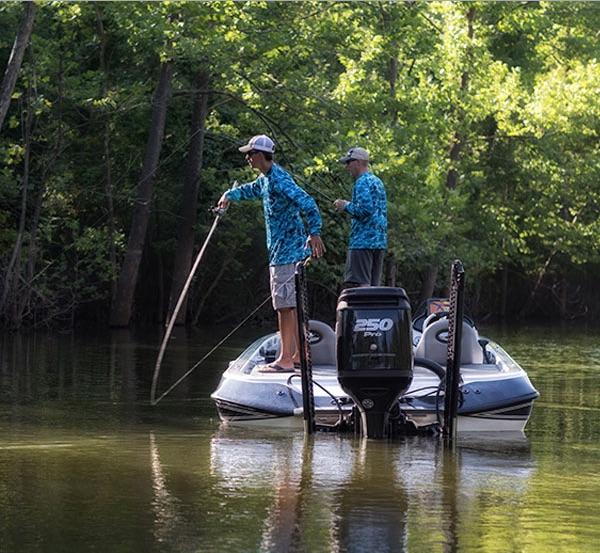Shane Smith
When you watch Bassmasters or any national tournament trail in the spring, you will certainly hear the term “sight fishing.” Or that he is a great “sight fisherman.” Is it as easy as seeing a bass on a bed and casting a bait in and catching it? No, it’s not.
Just as every technique requires a different approach and gear, sight fishing is no different. Here are 6 tips to help you catch a few more fish that you can see this spring:
1. WHERE TO LOOK.
Think of areas that are protected by the elements that still offer sun to the eggs. Pockets behind boat docks, small holes in the grass, a flat patch behind a cypress tree. Look for fish to make the beds, then males will occupy them and keep them neat and clean to attract a female to the nest. In most cases you won’t see her laying in the middle of the bed but rather slightly off the edge. Look for pectoral fin movement or a slightly darker object close by.
2. QUALITY POLARIZED OPTICS.
This is an area that there are no free lunches. Invest in some good high-quality polarized glasses if you intend on sight fishing. I like lenses with an amber base most of the time with a mirrored lens for most days. Wear a hat that meets the glasses and will cut the glare down as much as possible.
3. PUSH POLE.
I feel as though too many anglers blow by beds or blow fish off beds with their trolling motors. Get you a push pole you can easily deploy to maneuver your boat without muddying up the water and spooking the fish. My push pole is used by duck hunters and telescopes to fit inside my boat easier.
4. READING THE FISH.
Now that you have found a bed with a bass close by, how do you catch it? Most bass will have an area of the nest they stick to and may or may not move far from. Try and find the spot that agitates the bass. If at all possible, don’t cast right into the bed but past it or use a side approach. If the bass sees your bait and swims off and doesn’t return quickly, you are better off coming back later. If the fish noses the bait, swims erratically, or circles the bait, I feel as though it is catchable.
5. WHAT TO THROW?
This list can go on and on. Everyone has their favorites. Mine are a lizard, senko, bream-style swimbait and a brush hog. You can insert just about any style of soft plastic here and be OK. Two schools of thought on color are natural versus visible. I usually opt for something in green pumpkin or watermelon. But if I really wanna see my bait, I will opt for a bright white, orange or chartreuse bait.
6. WHAT KIND OF ACTION IS BEST?
In my experience on heavily pressured lakes such as Lake Fork, Toledo Bend and Sam Rayburn, your first cast can be the most important cast at a bedding fish. It will give you clues as to what your bait is doing and how the bass responds to it. I feel as though a slow twitch is much better than raising your rod tip up and moving your bait three feet. Barely twitch the line in your fingers and keep it in the strike zone longer. A lot of days, a no-action approach works better than a bait with tons of action.
A few other things to keep in mind is that you won’t be able to catch every bass you see on a bed. Calculate your risk versus reward for how long you pursue a single fish you can see. One other thing to think about is wind or rain. If the next day it is supposed to be windy or rainy you won’t be able to see the beds very well. I will take a small piece of wire and stick beside the bed to let me know where it is when I can’t see it.
This can be one of the most fun ways to catch fish and also one of the most frustrating ways to not catch them as well. There is just something super cool about watching the magic happen and seeing that big mouth engulf your bait. Sight fishing is also a great method to use for redfish and trout.









